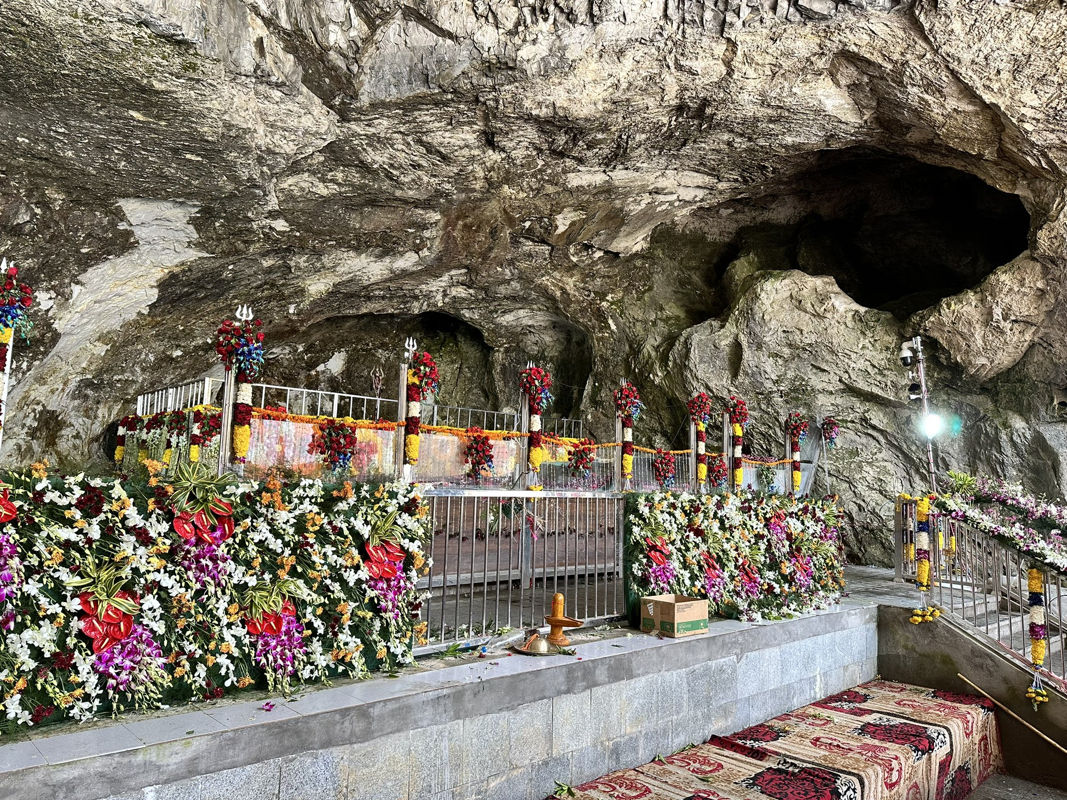
SRINAGAR: More than a dozen Mountain Rescue Teams assisted thousands of pilgrims during this year’s Amarnath pilgrimage in the south Kashmir Himalayas, officials said on Monday, as the annual yatra concluded with more than 5.10 lakh pilgrims offering prayers at the cave shrine.
The Mountain Rescue Teams (MRTs) — comprising personnel from the Jammu and Kashmir Police, State Disaster Response Force (SDRF), National Disaster Response Force (NDRF), and the Central Reserve Police Force (CRPF) — was flagged off by Additional Director General of Police Vijay Kumar and deployed on the twin tracks leading to the 3,880-metre-high cave shrine nearly a week before the start of the 52-day pilgrimage on June 29.
While eight MRTs manned the critical spots on 48-kilometre traditional Pahalgam route in Anantnag district, five were positioned along the shorter but steeper 14-kilometre Baltal route in Ganderbal district.
“After two back-to-back recce of the twin routes, all 13 MRTs were stationed at the identified spots by June 24 and helped rescue more than 1,300 pilgrims in dire need, besides providing oxygen to 20,000 others during the yatra,” Inspector Ram Singh, the MRT in-charge, told PTI.
Singh created history by becoming the first personnel from the Jammu and Kashmir Police to scale the world’s highest peak — Mount Everest — in May 2008.
He said the teams also helped a large number of local service providers and the security personnel who suffered from altitude sickness, braving life-threatening challenges in the snowbound, high-altitude tracks.
He said the MRTs also distributed over 20,000 raincoats free of cost among the pilgrims.
More than 5.10 lakh pilgrims from across the country and abroad visited the cave shrine, housing a naturally formed ice lingam, during the yatra, which concluded with Chhari Mubarak — the silver-robed mace of Lord Shiva — reaching the cave shrine on Monday afternoon on the occasion of Shravan Purnima, coinciding with festival of Raksha Bandhan.
Singh, who is scheduled to get back to the base camp in Srinagar after the return of the Chhari Mubarak from the cave in the next few days, said each MRT team operated in its area of responsibility, covering the entire yatra track, including Sheshnag, Mahagunas Top, Poshpatri, Dardkote, Sangam Top, Brarimarg and Railpathri.
Each member of the team had an individual kit with gaiters, overmitts and equipped with mountain rescue equipment such as carabiners, jumars, descending rappels, avalanche rods, helmets, oxygen cylinder and first-aid kit, besides communication tools, he said.
An SDRF spokesperson said the MRTs played an invaluable role during the yatra, describing it as a journey of faith and one that tested both physical endurance and spiritual resolve.
“This year, the efforts of the SDRF and other MRTs were instrumental in ensuring the safety of the yatris, leading to minimum casualties and widespread appreciation. The SDRF was strategically deployed along the yatra route,” he said.
The spokesperson said their presence ensured that help was always within reach for pilgrims in need. Whether it was altitude sickness, dehydration or injuries from falls, the teams were equipped to handle it all.
“The dedication of the MRTs was evident from their willingness to manually carry unconscious or severely ill pilgrims on their backs or stretchers, navigating the steep and rocky paths with great care. The proactive measures resulted in a significant reduction in the number of serious incidents and fatalities this year,” he said.
He said their constant vigil and readiness played a key role in maintaining the safety of the pilgrims.
A video shared by the SDRF showed the pilgrims acknowledging the crucial role of the MRTs and expressing gratitude to the rescuers in making their yatra a memorable one.
“They (SDRF personnel) were very helpful. Special thanks to them for their help, otherwise it was not possible for me (to perform the yatra),” a woman pilgrim said, lauding the MRTs.
Another yatri said there was no tension when the SDRF teams were around. “For us, they are a form of our Lord.”
The spokesperson said the exemplary work of the MRTs had not gone unnoticed, highlighting that their presence not only provided physical assistance but also a sense of security and reassurance to the yatris.
“Their efforts have been widely recognised and appreciated, not just by the pilgrims but also the broader community and the authorities. The SDRF and other MRTs have once again demonstrated their unwavering commitment to the safety and wellbeing of the pilgrims,” he said.
He said their tireless efforts, advanced training and seamless coordination ensured that the yatra was one of the safest in recent memory with minimal casualties.
The spokesperson said it was the SDRF’s first battalion control room and joint police control in Pahalgam that played a key role in effective coordination. (PTI)

